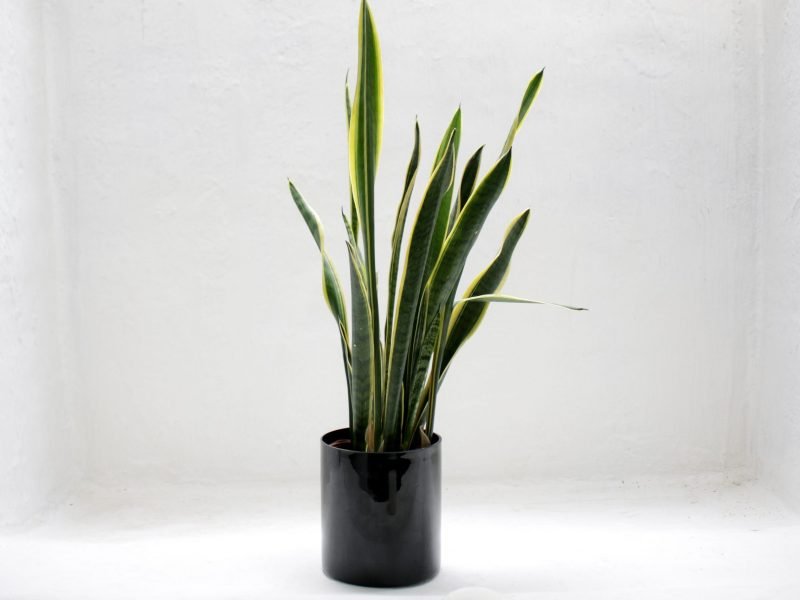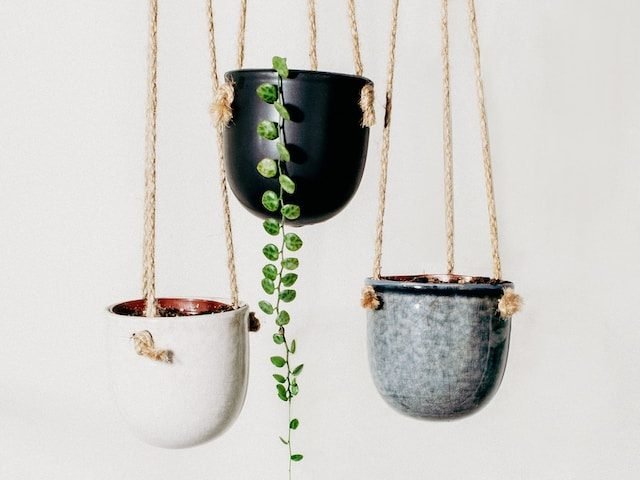
There is a bit of a houseplant myth where people believe that Snake Plants are unkillable. Whilst it is true that they are definitely less sensitive that a lot of their houseplant friends, Snake Plants can suffer if their environment or care isn’t great. The main reasons why your Snake Plant might be dying are: overwatering, drainage issues, lighting problems, low temperatures and pest infestation.
Overwatering can cause your Snake Plant to die
Improper watering is one of the biggest issues for most houseplants and Snake Plants are no different. Overwatering will cause their leaf tips to turn brown, their roots to rot and eventually their leaves to become unstable and mushy.
During the growth months, you shouldn’t be watering your snake plant more than once every week or two. During the colder months, once a month is definitely enough. It is really good to get to know your plants as each and every one is ever so slightly different. As well as checking the moisture at the top of the soil before watering, we also recommend picking up your snake plant before and after watering so you get an idea of much your plant will weigh when it needs water. Be careful that you don’t hurt yourself on the leaf tips when doing this, we are speaking from experience here!
*A little watering tip we have for a snake plants is to always water from the bottom. This encourages the roots to grow downwards and will increase the plant’s stability.
A dying Snake Plant can also indicate drainage problems
Your Snake Plant may also be dying due to drainage issues in your pot. Although you could be watering the correct amount, if your pot isn’t draining the water in the right way, it could cause the soil to become waterlogged.
You can very easily increase the amount of drainage in your soil by mixing in a small amount of perlite, this will make it far easier for water to flow through and out of the drainage holes of your pots (you should also check to make sure your pots have drainage holes).
Another easy step is to add a few small stones or pebbles to the bottom of your pots, this helps in making sure that the drainage holes are never blocked by soil or any loose debris.
Lighting issues might also be the cause of your dying plant
It is important to get the right balance with snake plants. Whilst they definitely are low-light plants, particularly dark corners will stilt their growth and mean that their pattern will become bland and less prominent over time. If you find the leaves are drooping a little it may be because your snake plant is not getting enough light. As long as your plant is getting some sunshine in the day, this won’t often be the cause of death for your snake plant.
It is actually more likely that your snake plant is suffering due to too much sunlight. Snake plants can cope with a range of lighting conditions but dislike bright, direct sunlight for more than an hour a day. Direct sunlight can burn and dry out the leaves, which is irreversible, unfortunately.
If your snake plant is placed by a south-facing window, this could provide too much sunlight per day. Try moving your plant a little further away from the window, or to an east or west-facing window.
Watch out for low temperatures
Cold temperatures and drafts can also cause snake plants to suffer. They really dislike cold air so make sure that it is not placed near doors or windows that may be drafty. Even though the temperature of your home may be perfect for your snake plant, the drafts coming in from outside may be colder and harm your plant’s health. You can always pick up a digital thermometer to check the spot your snake plant is in.
Your Snake Plant might be dying due to a pest infestation
A slightly less common reason why your snake plant might be dying is pest infestation. It can happen that mealybugs take hold of your plant. Mealybugs are covered in white cotton-like material and are most often found towards the bottom of the leaves, in the most protected areas of the plant.
If you find mealybugs on your snake plant recommend giving the whole plant a shower. They have hardy leaves so can withstand the shower better than some other more delicate plants. You should also treat your snake plant with an organic insecticide to fight the infestation.
Make sure to check over your other plants in the room to see if any other plants have pests. Keep your snake plant (and other infected plants) a good distance away from any of your other houseplants as you don’t want the mealybugs to spread.
To find out more about how to care for your plant, visit our Snake Plant care guide. There you will find everything you need to know to keep your Snake Plant healthy and thriving as well as tips and tricks around propagation, fertilisation and repotting.















